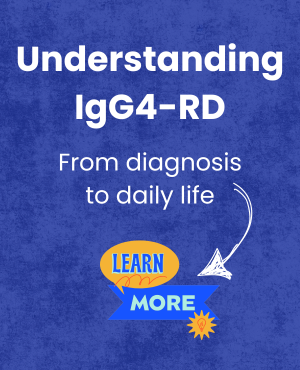High IgG4 antibody blood levels ID 75% of IgG4-RD cases: Study
Respiratory conditions, autoimmune diseases, and cancers among other reasons

High blood levels of IgG4 antibodies may be a sign of many diseases, not solely IgG4-related disease (IgG4-RD), but blood tests for IgG4 can identify most IgG-RD cases and rule it out for most people without the disease, a study in Spain reports.
Certain respiratory conditions, autoimmune diseases, and cancers were among other common explanations of high IgG4 levels.
“This data shows that high levels of IgG4 could indicate a more generalized and nonspecific immune reaction,” the study’s researchers wrote. “This is … why in the latest 2019 ACR/EULAR [American College of Rheumatology and the European League Against Rheumatism] classification criteria for IgG4-RD, IgG4 elevation is no longer an essential element for the diagnosis of this disease.”
Such tests should only be used if there’s a high suspicion of IgG4-RD based on clinical and laboratory criteria, the researchers said. The study, “Evaluation of serum IgG4 levels as a screening tool for IgG4-related disease: Data from a retrospective study,” was published in Reumatología Clínica.
In IgG4-RD, immune cells, including those that produce IgG4 antibodies, infiltrate tissues, causing inflammation and scarring that can trigger tumor-like masses to form. The disease can affect one or more organs and lead to a range of symptoms, depending on the areas affected.
Reaching a diagnosis of IgG4-RD may have many steps. In the 2019 ACR/EULAR diagnostic criteria, there must be signs of involvement in at least 1 of 11 possible tissues and organs consistent with IgG4-RD. Clinicians then need to eliminate other possible diseases that might explain the symptoms and exclude IgG4-RD. The final step in the diagnostic criteria requires identifying IgG4-RD features in clinical exams, blood tests, imaging scans, and tissue sample analysis. At this point, clinicians may evaluate IgG4 blood levels.
Not everyone with elevated IgG4 will have IgG4-RD, however, and some people with the disease may not have elevated IgG4 antibodies. High IgG4 levels aren’t required for a diagnosis under updated ACR/EULAR classifications. This raises questions about how useful such blood tests could be in diagnosing suspected cases.
Testing for presence of IgG4 antibodies
Here, researchers in Spain examined the records of 1,852 people at a hospital in Valencia who had blood IgG4 tests from January 2010 to June 2023. The results showed that only 9.8% had high IgG4 levels. Six met ACR/EULAR criteria for IgG4-RD, with these being a median age of 61.5 and two-thirds being female. The diagnostic criteria were also met by two people with normal IgG4 levels. Their median age was 61 and one was female.
“Elevation of IgG4 in blood correctly identified 3 out of every 4 patients with IgG4-RD,” the researchers wrote.
Most of the participants with elevated IgG4 didn’t have IgG4-RD. However, only about 9.5% of people without IgG4-RD had high IgG4 levels — smaller proportionally than the 75% with IgG4-RD who had this result on the blood test. As such, high IgG4 levels were “effective in excluding the disease in patients without IgG4-RD,” the researchers wrote.
Among those with high IgG4 who didn’t meet other diagnostic criteria for IgG4-RD, 45.3% were diagnosed with a respiratory condition such as chronic obstructive pulmonary disease (COPD), idiopathic pulmonary fibrosis, and asthma.
Several others (22.1%) had bodywide autoimmune conditions other than IgG4-RD, such as systemic lupus erythematosus or eosinophilic granulomatosis with polyangiitis. Cancerous tumors were also diagnosed and occurred in about 1 in 10 with elevated IgG4-RD. The rest had diseases with gastrointestinal involvement or other diagnoses.
“Our study highlights that elevated IgG4 levels are not exclusive to IgG4-RD,” the researchers wrote, noting that high IgG4 levels may indicate a broader, nonspecific immune reaction. Despite this, high IgG4 levels were able to correctly identify IgG4-RD in 75% of cases and correctly rule out 90.5% of those without the disease. Because of this, the researchers believe IgG4 blood tests may still be useful in the diagnostic process when used alongside other criteria. In particular, the test could help when clinicians suspect a possible case of IgG4-RD.
“To avoid overuse of this test and misuse of diagnostic resources, its use in patients with high clinical suspicion of IgG4-RD would be recommended,” they wrote.







